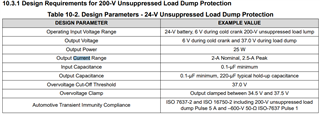Hello There,
We are designing a new product for automotive applications (like ECUs) that is powered by a 12 or 24 V battery, and our application requires 15 A of current. Could you please suggest any power protection techniques that could help our product clear load dump, reverse voltage protection, and superimposition of AC tests?
Thanks,
Sakthivel
















